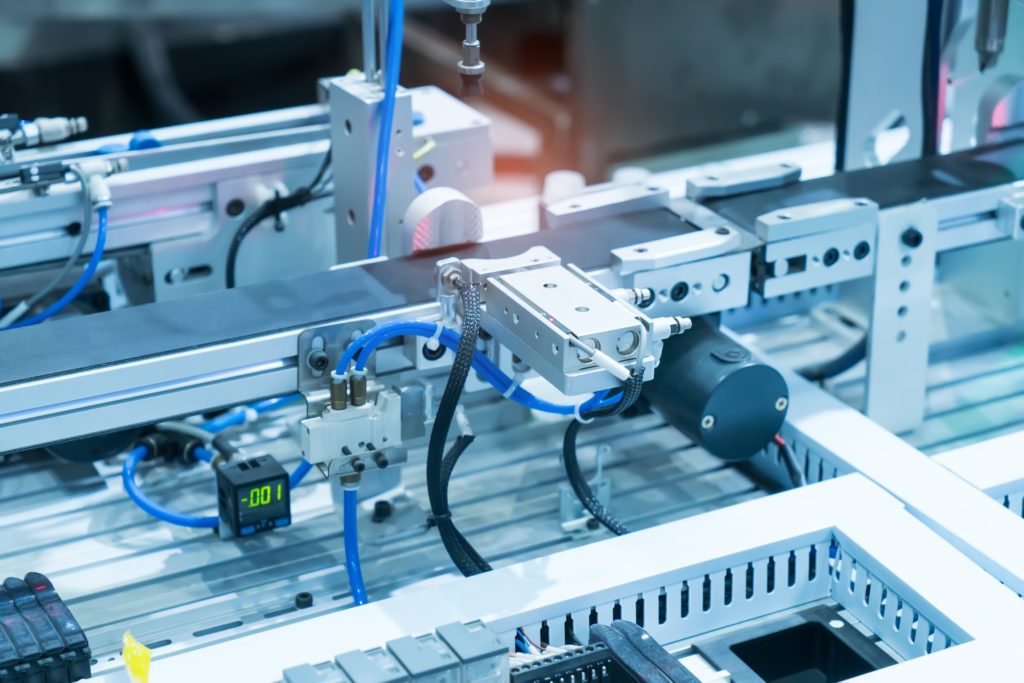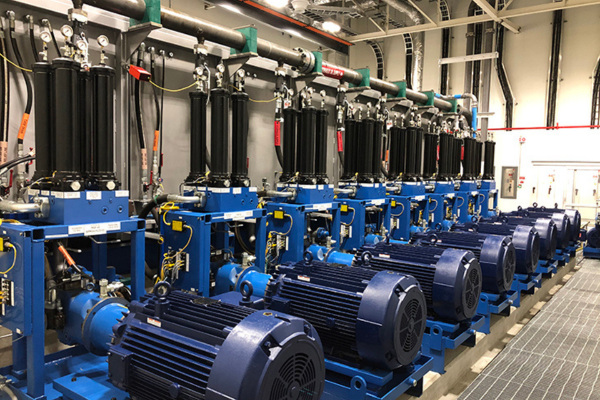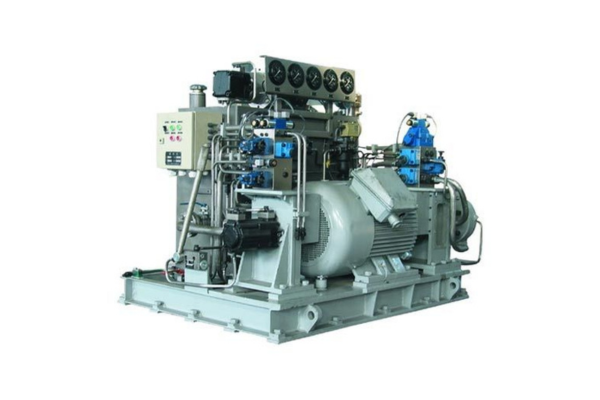Hydraulic and Pneumatic Systems
These systems utilize hydraulic or pneumatic actuators, valves, pumps, and other components to perform various tasks in steel manufacturing processes.
- Home
- Products
- Spares and Consumables
- Hydraulic and Pneumatic Systems
Our Products
Let’s Start Work
Together
Please feel free to contact us. We will get back to you with 1-2 business days. or just call us now.

Hydraulic and Pneumatic Systems Overview
Hydraulic and pneumatic systems are crucial components in the steel manufacturing industry, providing power transmission and control through the use of fluids or compressed air. These systems utilize hydraulic or pneumatic actuators, valves, pumps, and other components to perform various tasks in steel manufacturing processes.
Range of Hydraulic and Pneumatic Systems

Hydraulic System

Hydraulic systems use fluid (typically oil) to transmit power and control the movement of machinery and equipment. They consist of hydraulic pumps, hydraulic actuators (cylinders or motors), valves, hoses, filters, and reservoirs. Hydraulic systems generate high force and torque, making them suitable for heavy-duty applications in the steel industry. They provide precise and controlled movement, enabling tasks such as lifting, bending, pressing, and clamping.
Applications of Hydraulic System
Material Handling
Hydraulic systems are used in cranes, lifts, and forklifts for lifting and moving heavy steel materials and products. They provide the necessary power and control for safe and efficient material handling operations.
Pressing and Forming
Hydraulic presses are employed in steel manufacturing for tasks such as metal forming, stamping, and extrusion. They generate high force to shape and mold steel into desired forms, such as sheets, plates, or structural components.
Tube and Pipe Bending
Hydraulic systems are used in tube and pipe bending machines to apply controlled force and achieve precise bending angles. They ensure accurate and repeatable bending of steel tubes and pipes for various applications.
Shearing and Cutting
Hydraulic systems drive shearing machines and cutting equipment used for steel plate cutting, slitting, and cropping. They provide the force required to shear through thick steel plates and ensure clean and precise cuts.

Pneumatic Systems

Pneumatic systems use compressed air to transmit power and control the movement of machinery and equipment. They consist of air compressors, pneumatic actuators (cylinders or motors), valves, hoses, filters, and receivers. Pneumatic systems are known for their fast response time, simplicity, and cost-effectiveness.
Applications of Pneumatic Systems
Material Conveyance
Pneumatic systems are employed in pneumatic conveying systems to transport steel granules, powders, or pellets. They utilize compressed air to move materials through pipelines or ducts, facilitating efficient material handling.
Dust and Fume Extraction
Pneumatic systems are used for dust and fume extraction in steel manufacturing processes, ensuring a clean and safe working environment. They suction and transport airborne particles, contaminants, and fumes generated during operations.
Actuation and Control
Pneumatic actuators are used for tasks such as opening and closing valves, operating dampers, and controlling flow rates in steel manufacturing processes. They provide fast and precise movement, allowing for quick response and precise control.
Key Features and Benefits
Power and Force
Hydraulic and pneumatic systems deliver high power and force, enabling heavy-duty operations in steel manufacturing. They can generate substantial force for tasks like lifting, pressing, bending, and cutting steel materials.
Precise Control
Hydraulic and pneumatic systems offer precise control over movement and force application, ensuring accurate and repeatable operations.
Speed and Efficiency
Hydraulic and pneumatic systems can operate at high speeds, allowing for fast and efficient production processes in the steel industry. They offer rapid response times, enabling quick movements and reducing production cycle times.
Versatility and Adaptability
Hydraulic and pneumatic systems are versatile and can be easily integrated into various steel manufacturing applications. They can be customized and adjusted to meet specific requirements, providing flexibility in design and operation.
Safety
Hydraulic and pneumatic systems incorporate safety features such as pressure relief valves, flow control valves, and emergency stop functions. They ensure the safety of operators and equipment by providing controlled and regulated movements.
Durability and Reliability
Hydraulic and pneumatic components are designed to withstand the demanding conditions of the steel industry, including high temperatures, heavy loads, and continuous operation. They are built with robust materials and undergo rigorous testing to ensure durability and reliability.
Cost-Effectiveness
Hydraulic and pneumatic systems are often more cost-effective compared to alternative power transmission methods. They require less maintenance and have a longer lifespan, resulting in reduced downtime and lower operating costs.
Integration with Automation
Hydraulic and pneumatic systems can be seamlessly integrated into automation and control systems. They can be controlled and monitored through programmable logic controllers (PLCs) and human-machine interfaces (HMIs), enabling centralized control and coordination of steel manufacturing processes.
Environmental Considerations
Pneumatic systems use compressed air as the working medium, which is readily available and environmentally friendly. Hydraulic systems can use biodegradable fluids, minimizing the impact on the environment.
In summary, hydraulic and pneumatic systems play a vital role in the steel manufacturing industry by providing power transmission, precise control, and efficient operation. They are utilized in a wide range of applications such as material handling, pressing, bending, cutting, and control systems. With their high power, precise control, versatility, and durability, hydraulic and pneumatic systems contribute to the productivity, safety, and cost-effectiveness of steel manufacturing processes.

